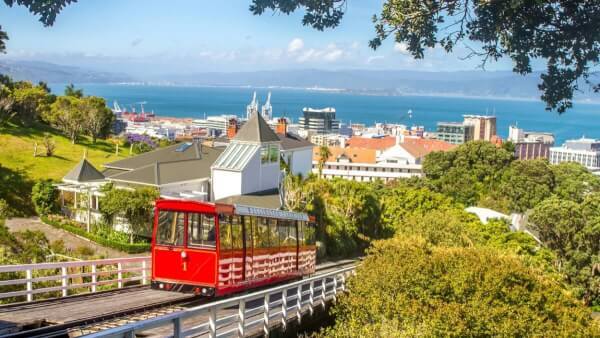Travelling to the Philippines from Australia. The Lowdown
Travelling from Australia to the Philippines? Let’s fill you in on the travel requirements, touristy and non-touristy spots and other need to knows in our guide

Japan: it’s the dream tourist destination for millions. This fascinating, beautiful country boasts a culture that’s excitingly different from what you’re used to, and contains both the hyper-modern city of Tokyo and some stunning sites of natural and historic beauty. It’s a hotspot for tourists, of course – but this one’s worth braving the crowds for. Here’s our guide to how to get started planning your trip to Japan.
This guide also contains some tips on a particularly tricky issue: travel money. It’s never easy to know the most efficient and cost-effective way to spend money when you’re travelling overseas, which is why we’ve included a few useful pointers here.
You already know this, but it’s worth stating it once more: the better you plan, the more you’ll get out of your trip. That’s particularly true when you go somewhere like Japan, where the considerable cultural differences – and particularly difficult language – could trip you up if you’re not prepared.
Here are some of the areas in which it pays to do your research – all of which are covered later on in this guide.
Generally speaking, Japan is an expensive country, but how much your trip to Japan will cost naturally depends on what you’re willing to spend. But regardless of whether you’ll be staying at a luxury retreat or spending your nights in a capsule hotel, you shouldn’t pay more than you have to.
That means making sure you can access your money in an efficient way. Well in advance of your trip, find out what your bank will charge you to use your debit and/or credit card there – and also consider whether it might be worth getting a travel money card.
Whatever you do, watch out for the exchange rate. If it drifts too far away from the mid-market rate, you’re going to be losing out every single time your money switches currency.
Despite Japan’s technological brilliance, it’s still pretty fond of cash payments. Habits are slowly shifting, but they’re not quite there yet – it’s useful to keep some cash with you at all times, just in case. Especially if you’re heading out of the city¹.
Bear in mind, though, that you may face a fixed fee when you use an ATM – find out if your bank charges one. If so, you’ll need to limit your ATM withdrawals carefully.
Manage your money as you travel cheaply and easily with a Wise borderless account.
Open your account online before you leave, and hold, send and receive dozens of different currencies. You can manage your balances using the Wise app, and spend easily using the Wise borderless Mastercard.
Just top up from your home bank account, and convert to the currency you need to avoid foreign transaction fees. All currency conversion is done using the mid-market exchange rate with no markup, which can mean it’s far cheaper than relying on your regular bank.
If you’re an Australian citizen, there’s good news: you don’t need a visa to visit Japan as a tourist, so long as your trip isn’t more than 90 days long². The same is true for many other nationalities too³.
If your plan is to earn money during your trip, that’s different: look into a Working Holiday Visa or a full Employment Visa.
You won’t be short of choice when it comes to places to stay in Japan – although do book in advance to make sure you get the sort of place you want. Here are a few of your options:
Never Ending Voyage, Japanistry and Japan Guide all have some useful accommodation tips.
Japan’s transportation system is justifiably famous, but it does take a little planning. Here are some tips.
The thing about Japan is that it’s got something for absolutely every taste. You can spend your holiday speeding around Tokyo in a go-kart, or literally stay in a temple – it’s up to you. Here are a few things somewhere in between those extremes, though.
Really, the list of things you can do is never-ending.
Nothing can quite prepare you for a trip to Japan. But still, here are a few pointers.
Here are just a few extra pointers that might help you settle in a little easier.
Don’t forget to plan ahead and consider getting a Wise Mastercard Debit Card to help you get the most for your money and forget about the worries of exchanging money.
Enjoy your trip to Japan, whatever you plan to do while you’re there. It’s a unique place, that anyone would have a wonderful time exploring.
Sources:
All sources accurate as of 23 Jan 2020
*Please see terms of use and product availability for your region or visit Wise fees and pricing for the most up to date pricing and fee information.
This publication is provided for general information purposes and does not constitute legal, tax or other professional advice from Wise Payments Limited or its subsidiaries and its affiliates, and it is not intended as a substitute for obtaining advice from a financial advisor or any other professional.
We make no representations, warranties or guarantees, whether expressed or implied, that the content in the publication is accurate, complete or up to date.

Travelling from Australia to the Philippines? Let’s fill you in on the travel requirements, touristy and non-touristy spots and other need to knows in our guide

Want to import your boat from the US to Australia? In this quick guide, we’ll share the costs, timeframes and other need to knows

Want to import your boat from China to Australia? In this quick guide, we’ll share the costs, timeframes and other need to knows

Travelling from Australia to New Zealand? Let’s fill you in on the travel requirements, touristy and non-touristy spots and other need to knows in our guide

Explore our guide on the Commbank credit card travel insurance, detailing coverage, benefits, elligibility and essential tips for your next trip.

Both DragonPass and Priority Pass offer access to airport lounges worldwide. In this guide, we go over key differences that might make one a better fit for you.